
Guest post by Lee Y.; photos by Gregoire Lestienne, Mont Blanc Guide
Lee is an experienced traveler whose country resume puts mine to shame, and whom I often look to for travel advice. His adventures often take him to higher places, quite literally, as he has a serious penchant for climbing to the top of mountains. He has climbed Everest Base Camp, Kilimanjaro, Kota Kinabalu (in flip flops!) among others, and most recently, Mont Blanc. The decision to climb arose after his friend asked him to be the best man at his wedding and Lee decided at the last minute to join him and his siblings on their ascent of Mont Blanc, which they had organised to raise money for a local hospital close to their hearts.
He was kind enough to give me some insights on the trip to share here, what is physically necessary to attempt such a climb and all the practical details on how to go about it.
How to arrive at Mont Blanc, and what is the best time of the year to go?
A misconception regarding Chamonix and Mont Blanc is that it would be quieter in the summer months outside of the ski season it is famous for, but in fact the crisp alpine air and multitude of outdoor activities in the area brings more tourists in between June and September. Visiting during the summer months normally indicates better chances of good weather and a more comfortable climbing temperature so June – Aug are ideal; however these are the busiest times so finding a spot in the huts may prove tricky.
Getting to Chamonix from the UK is pretty easy: you can get a number of low cost carrier flights from the UK to Geneva and from there get a bus (you can book Easy Bus for around €20-€30 but there are other such as Alpybus which stop right at your hotel door) to Chamonix. Don’t expect the standard of Swiss timing to live up to expectations; the flights are often running late (especially those leaving the UK on an evening) and Easybus rarely waits. You might be able to get on the next Easybus free of charge but that is subject to free seats and a kind driver. Other companies like Alpybus will wait until the flights have come in but this can mean longer waiting around times if you are waiting for passengers for other delayed flights.
Should you take a guide or not? If so, which guide company would you recommend?
Every hiker is different so it is hard to say, for my part I am very glad I did. I have hiked above this altitude several times in my life (Kinabalu & Kilimanjaro Everest Base Camp) so I felt confident I would be able to hike at the required altitude, but I had never done ice climbing, learnt the correct method of traversing crevasses or group hiking using ropes; i.e. all the most dangerous elements of the Mont Blanc summit.
Whilst I appreciate that guides add a significant cost to the trip and for some people they do not see the point when Mont Blanc does not oblige climbers to use guides to summit, but I think perhaps the best way I can illustrate their value is by the simple fact that over the two day summit period we climbed, there were two separate incidents which resulted in fatalities, both of which might have been avoided if these people had guides. I am not saying a fit person without experience could not make the summit but you have to question the manner in which you want to make it.
- Can you speak French to communicate with the gendarme and hut managers regarding bad weather and landslides?
- Do you know what to do in a white out?
- Do you have access to an accurate weather report on a minute by minute basis which will allow you to figure out the best time to summit?
- Do you have an intimate knowledge of the area and what it has to offer and its history?
- Where the best photos can be taken?
- What to do when someone falls from a ridge or down a crevasse?
On top of all of these things they provide a sense of comfort and enjoyment that is hard to replicate on your own especially as a beginner alpinist. From giving you advice on other routes, seeing your strengths and weaknesses or just teaching local card games whilst pointing out great things to eat, the training that each of them goes through shines through in their professionalism which starts with making sure you’re safe and ends with them trying to make sure you have a positive and lasting memory of the trip to walk away with.
We went with Kailash Adventure and went for an option which allowed for a few practice days before the hike. The main contact guide was Thibault Goguet.
Are you able to organise your climb on arrival or should you book in advance?
As with anything, it depends on your plans and how much time you have to start with. If you plan to stay in the huts then you will need to book in advance as these fill up quickly. However even if you can’t, there are many last minute cancellations which afford the chance for a last min bed (I only managed to secure my bed spaces 48 hours before the start of the climb!) You can check availability here, but keep in mind you need a place for each of your guides.
What kind of training do you think someone needs to carry out prior to the hike, i.e. what fitness levels do they need to have?
This all depends on where you’re starting from as a base level. The group I climbed with had taken up running and cycling for the 6 month lead up, ranging from doing a few half marathons to 100 mile cycling events, which they all agreed they needed to have done to get into shape to climb. Given that it was a last minute event for me, if I hadn’t have run a marathon earlier in the year and done a few smaller treks I would have found the physical demands of the summit day very hard. You have to be fit. If the weather was perfectly predictable and you had three days, then you could take your time and wake up early and go slowly. The fitter you are, the faster the pace you can achieve if you need to push on in bad weather or to catch a view (also the shorter/fewer your rest stops will be). Whilst taking your time and going slower will require less fitness, it will take a bigger toll on your body physically as you’re on your feet for longer, so it pays to be able to keep a decent pace in the long run. Also the fitter you are the more fun and less daunting the task at hand is. The more physical preparation you put in before hand, the more time you have to enjoy the amazing views and take in the experience of what you’re going through rather than thinking your lungs and heart are going to explode.
If I were to offer the average person with no fitness some words of advise regarding training for Mont Blanc, I would highly recommend some cardio work with small goals to keep you focused (10k runs or long distance cycling/swimming) to get your fitness up. Also if you live in a country with hills then a great way to get practice for your feet is to take some day or weekend trips out with family and friends for a hike. Take a 35 litre bag and fill it with your kit and food plus a little extra weight (to replicate the additional weight of your axe, crampons, helmet etc) and try and get up a mountain or hill range for a minimum of 7 hours a day (starting as early as possible). Ideally sleep over at the start the night before and wake up early 5am for a 10 hour day. Most importantly, try to make your training fun and it’ll make you more likely to get to the level you need to be at on the day to enjoy it all.
What happens if you get sick on the trek or can’t handle it any more?
If you’re with guides they are so experienced they’ll know what to do and how serious it is. If you go without one then the best thing you can do is head back to one of the huts and seek advice and help. Always bring a first aid kit, aspirin, rehydration sachets and any medication you need. Do not try to summit if you are ill and don’t have a wealth of experience or a guide as you will not be able to take care of yourself if something goes wrong and will risk the lives of other climbers. If something goes very wrong the gendarmes do patrol and helicopter rescue is on constant stand by. If altitude becomes an issue, over exerting yourself will make it worse, if the weather allows, slow down and rest, and if the symptoms (headache, nausea, bleeding from the nose etc) do not subside or become worse then descend to a safe place immediately until the sickness passes.
How many days will the trip take all in all, can you break down the itinerary – i.e. what are you doing on which days?
- DAY 1: Settle in and explore Chamonix, hire equipment & buy last min items.
- DAY 2: Technical climbing (practicing using the ice axe and crampons), staying at the Refuge Albert 1ER (despite the powerful smell of the toilets on the day the hut is fantastic; great food and a really nice atmosphere)
- DAY 3: Summit of Aiguille du Tour and return to chamonix
- DAY 4: A break in the morning and then you take the Mont Blanc train to ascend to the Tête Rousse Refuge in the afternoon
- DAY 5: Climb Mont Blanc and then return back to the Gouter hut.
- DAY 6: return back to Chamonix and celebrate (I had a 10 scoop ice cream and a few glasses of champagne!)
What do you need/what to pack/ What gear can you get there/rent?
The recommended kit list we were told to bring is as follows:
- Top: underwear capilène or carline +
- Polar jacket or equivalent
- Waterproof (impervious) jacket (e.g. Gore-Tex)
- Thermal leggings
- Waterproof (e.g. Gore-Tex) trousers
- Warm hat
- 1 pair light gloves
- 1 pair warm gloves or mittens
- Gaiters
- Glacier glasses
- Woollen socks
- Liner (optional)
- Good high mountain shoes (leather preferred over plastic, waterproof, and need to fit studs/crampons over)
- Sunblock
- Ski mask (in the case of strong winds)
- Headlamp and replacement batteries
- 1 Gourd (clot) & 1 thermal jug (min volume 1.5 litres)
- Comfortable backpack, volume 30 – 45 litres
- Studs (crampons) with ante boots (fast ties preferred)
- Climbing helmet
- Ice axe (70cm) and ice sticks
We all rented (€108 for 5 days):
- Helmet
- Ice axe
- Crampons
- V3 boots
- Walking poles
Guides supplied us with the harness (baudrier), ropes and the avalanche search and rescue device (HAS R.V.A. device)
What is the accommodation like ?
What should you expect from the weather?
Weather will vary and is why you are best off giving yourself enough days to factor in some bad weather, which will spoil the climb and views. As with most mountains, it is best asking local guides if possible for up to date forecasts before you make a morning summit attempt so you stand a better chance of clear views. We were pretty lucky to have amazing weather during the days and the occasional thunder storm at night to add a bit of drama to the proceedings.
What do you recommend wearing during the hiking/at night to sleep in?
I hike and sleep warm so I didn’t one use my thermal leggings or even my hat once but everyone is different. Better to pack merino base layers and not use them than not bring them and be too cold. Waterproofs and down jackets are essential.
How did you feel when you reached the summit?
Emotional. I made a call to an important person and I’m not ashamed to say I might have had something in my eye for a second or two. We were utterly elated for about 10min before the realisation of the decent dawned upon us!
Would you recommend this hike to other people?
I would say if you are fit or are willing to train and understand the dangers involved that the rewards and memories are 100% worth it.
I hope that this may be useful in answering any niggling questions you may have had about the climb, feel free to comment below with any questions that may have not been answered though!
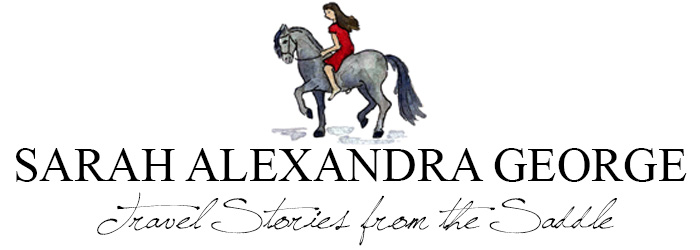
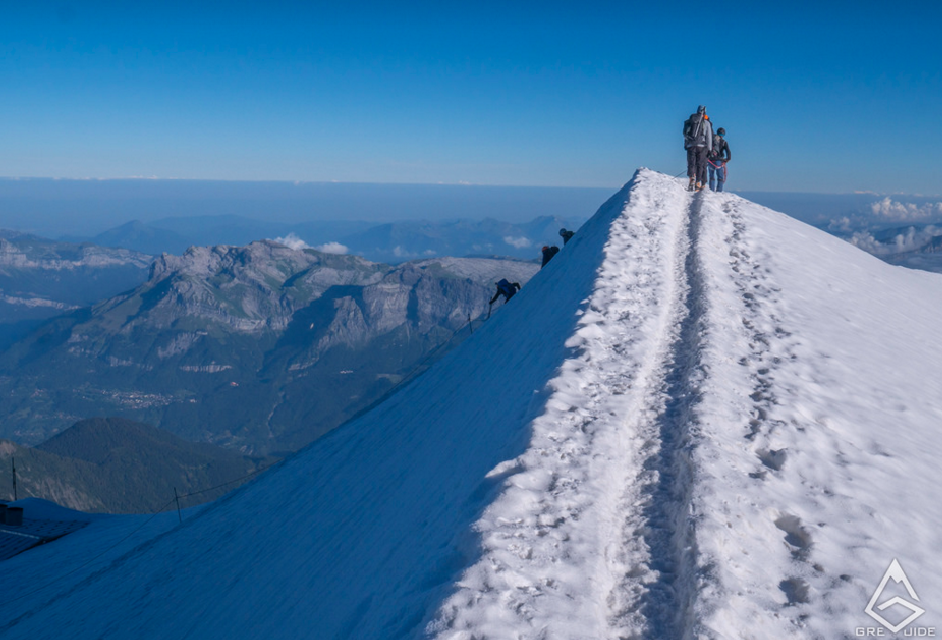
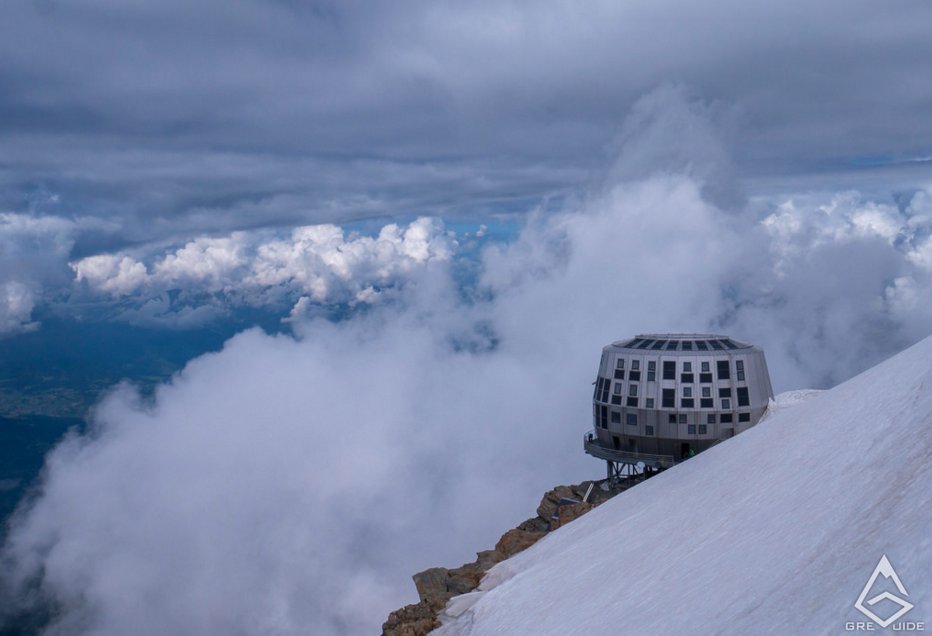




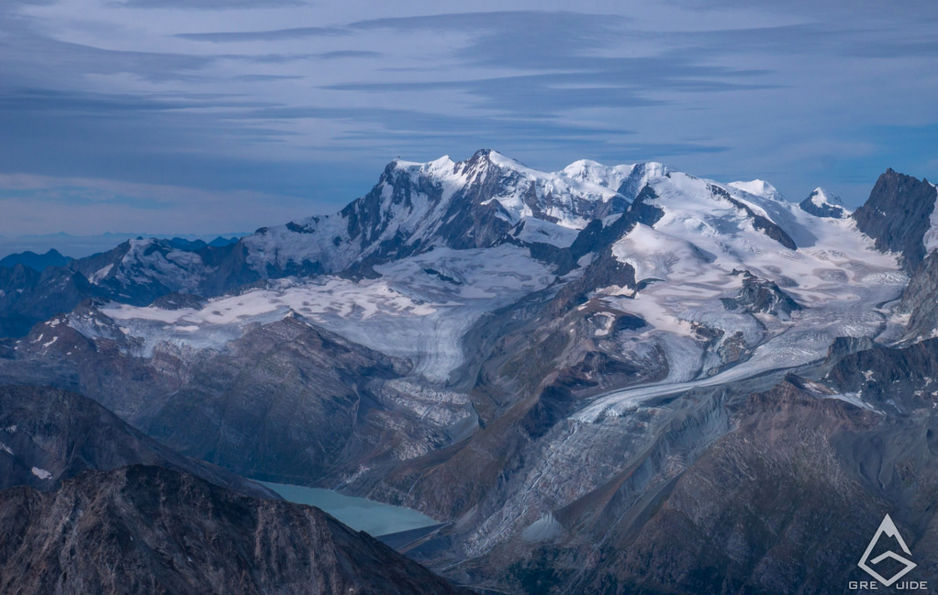
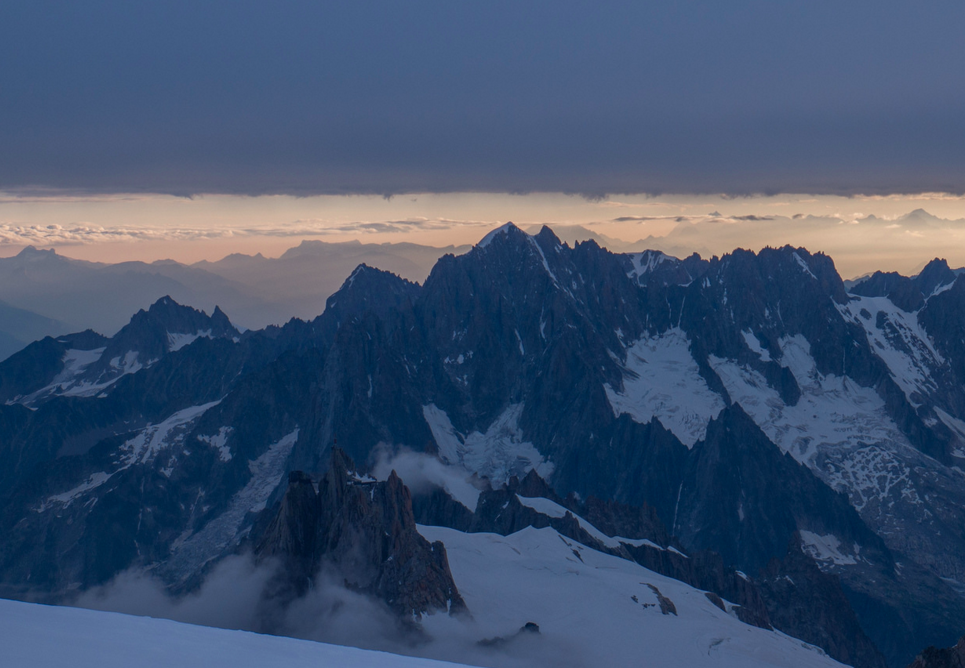
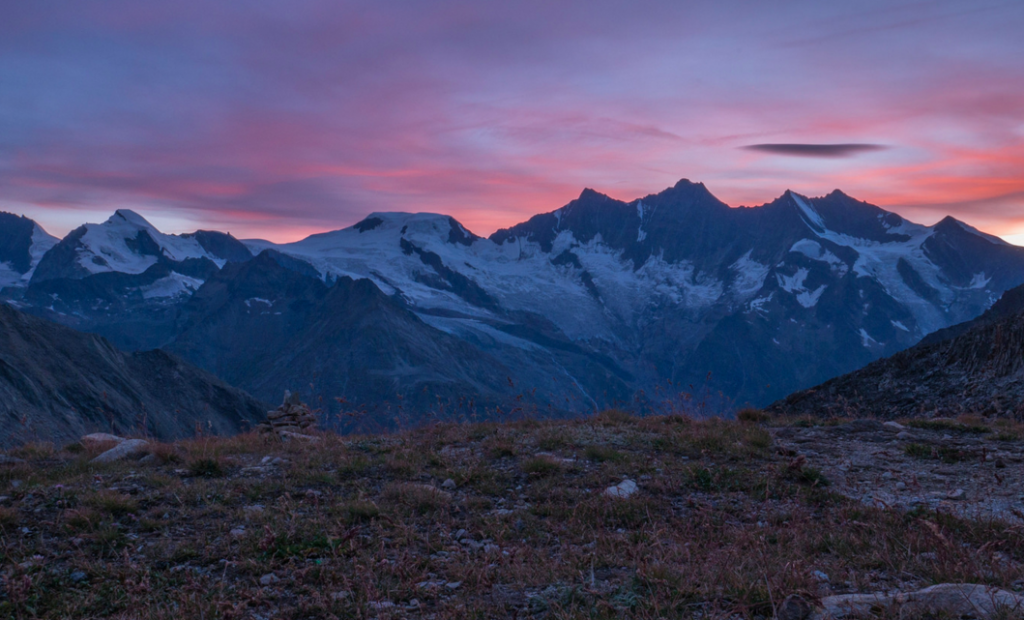
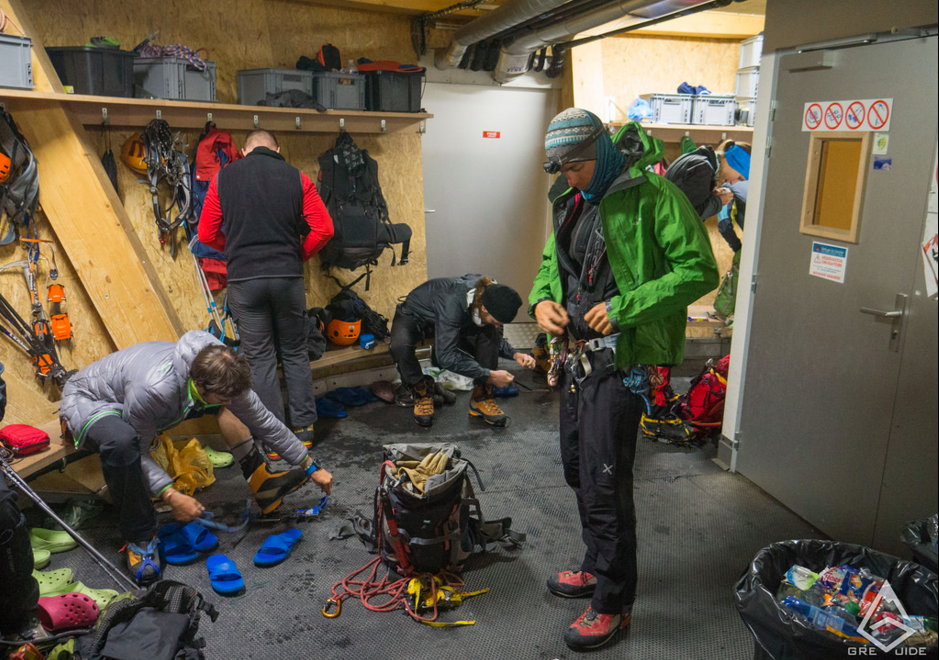
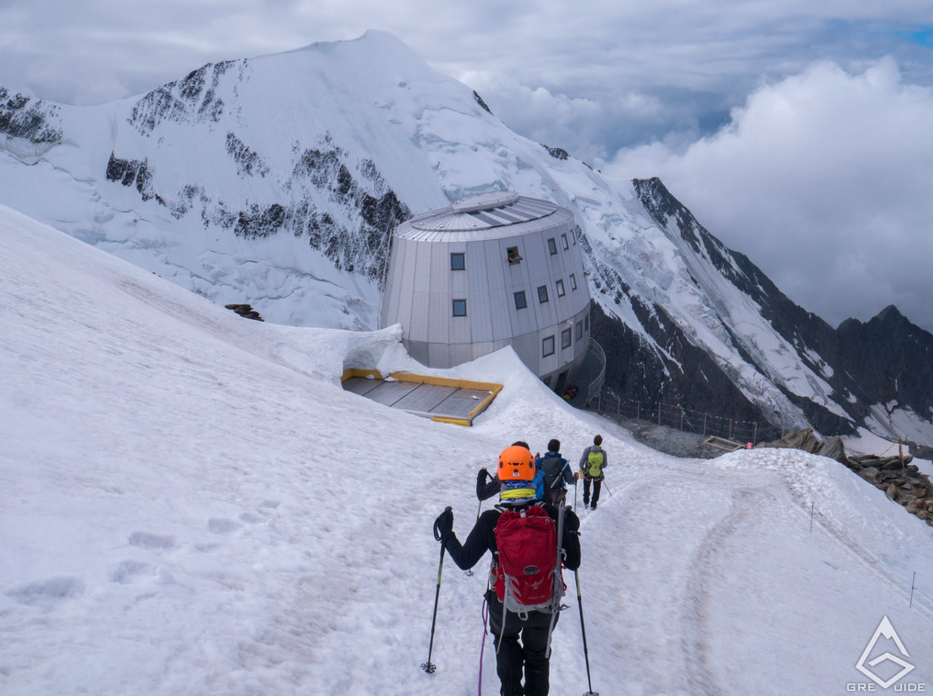

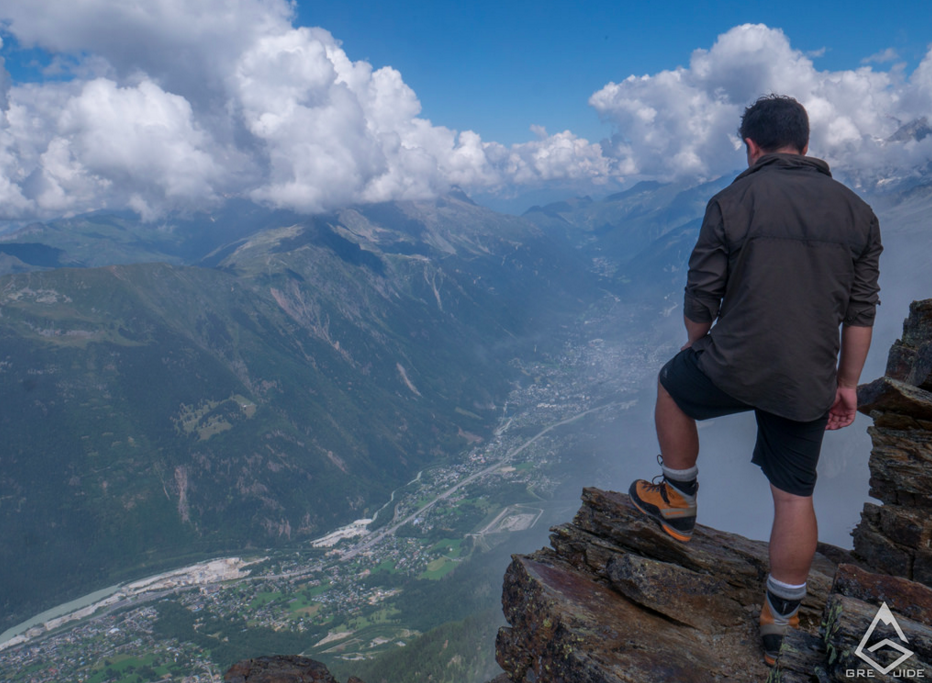
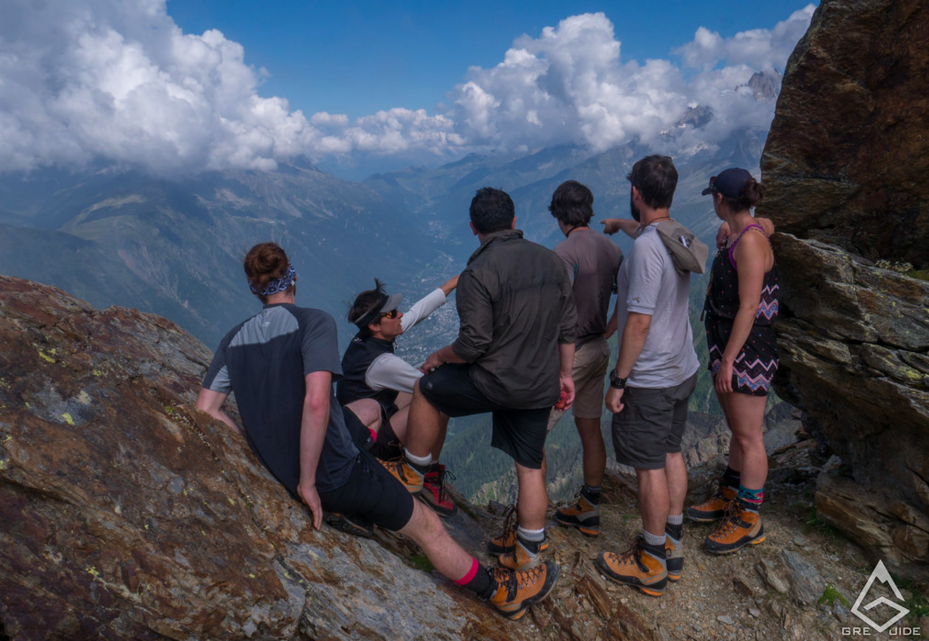
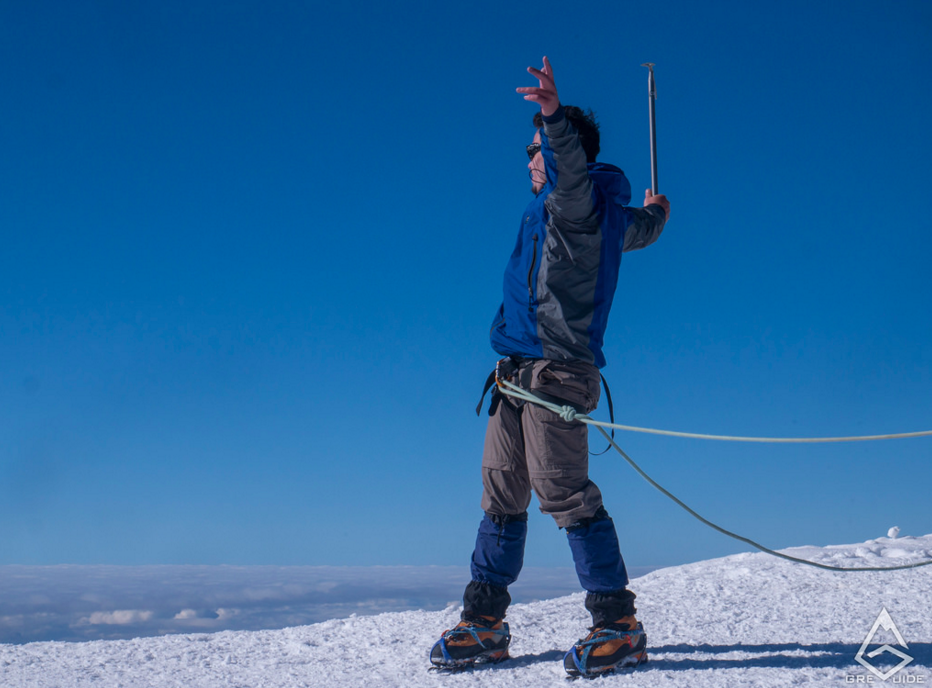
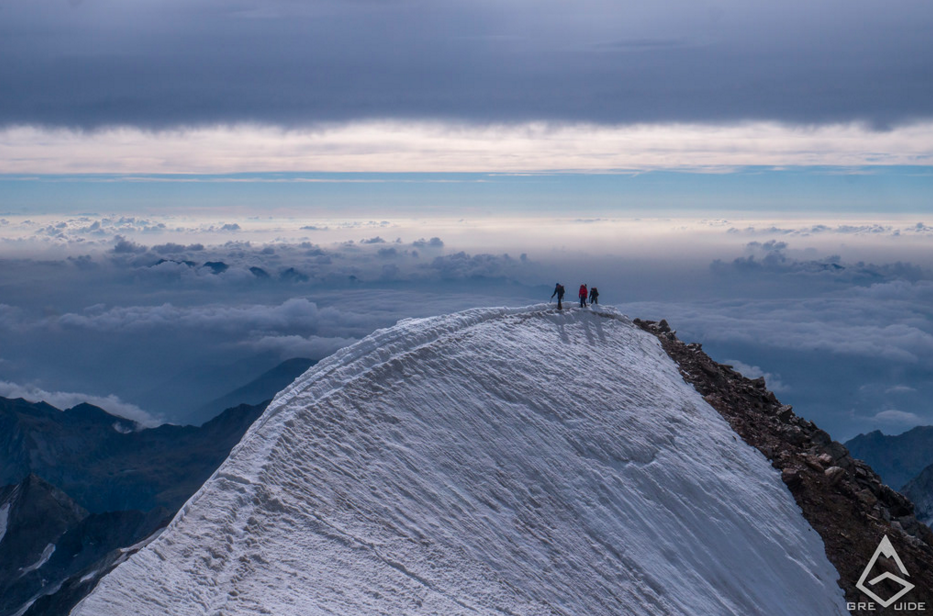


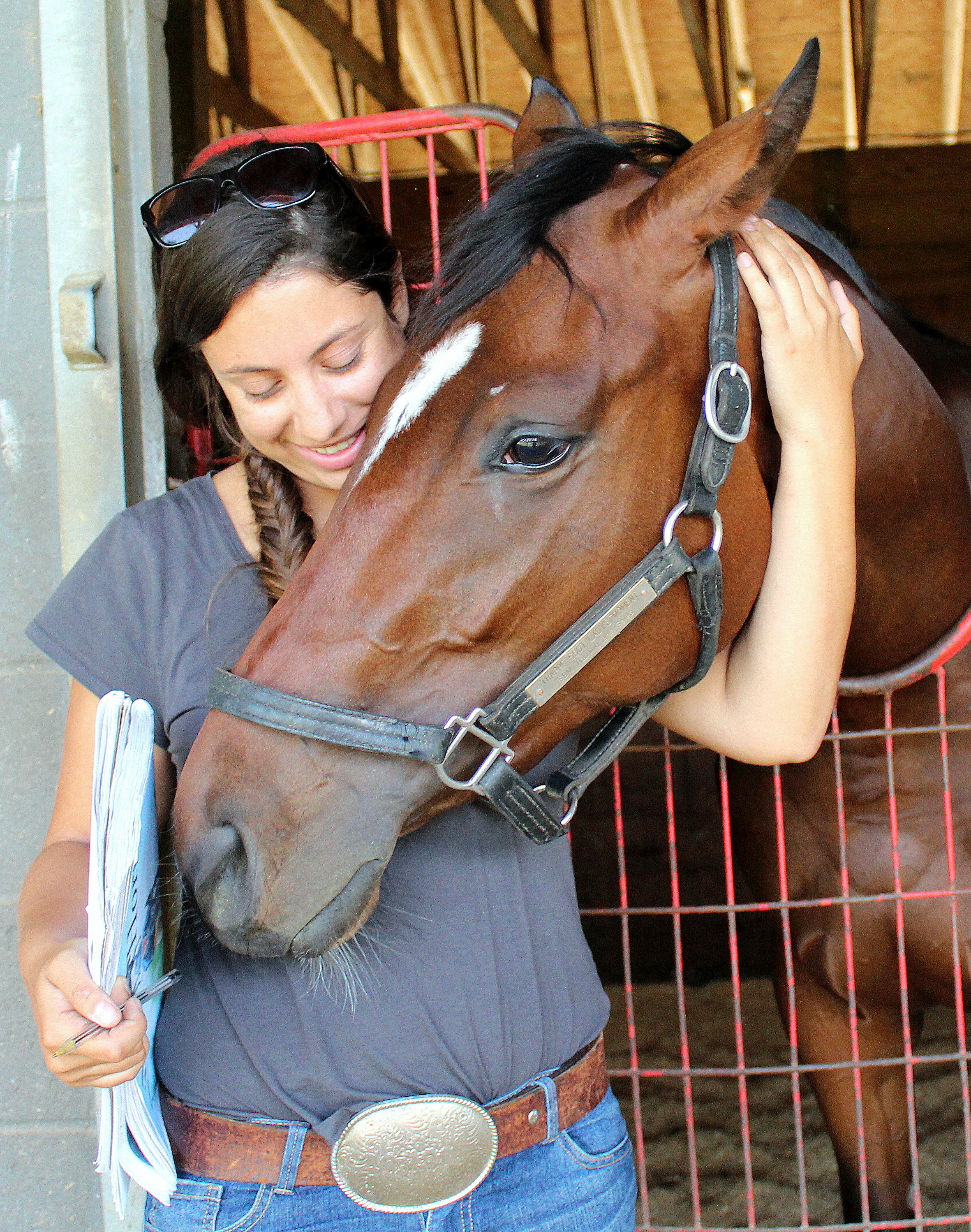

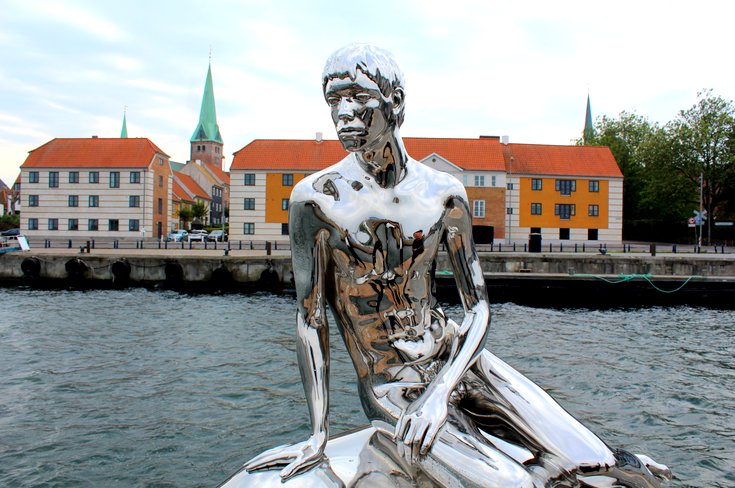
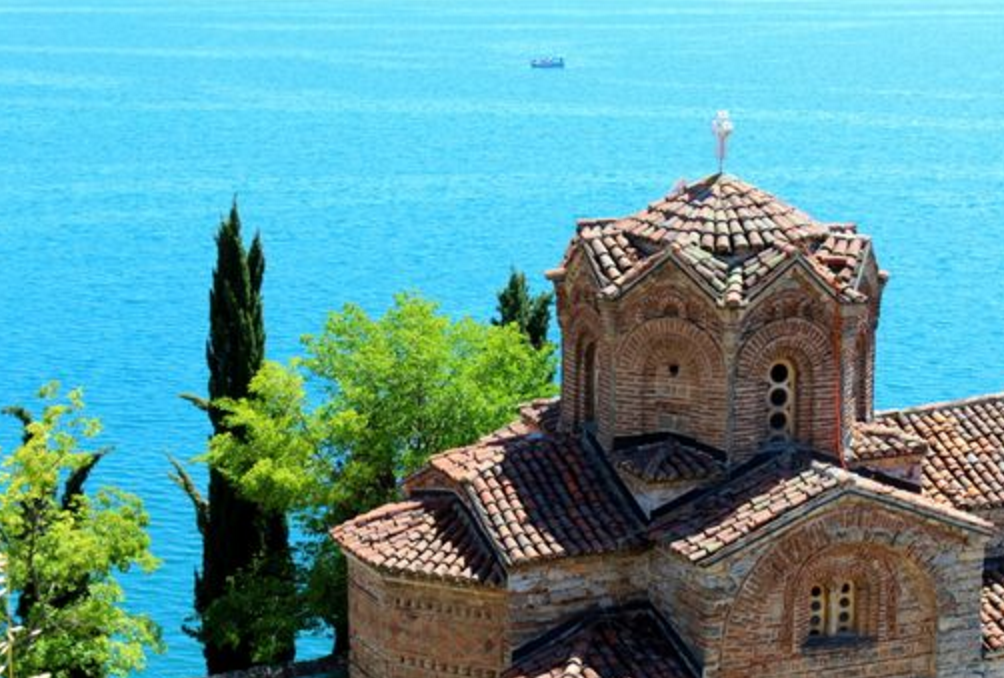
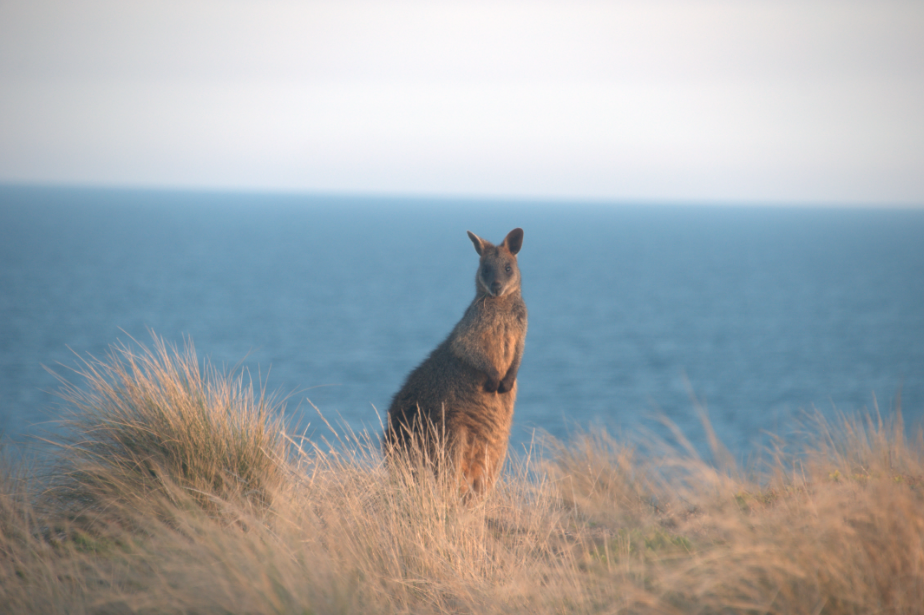

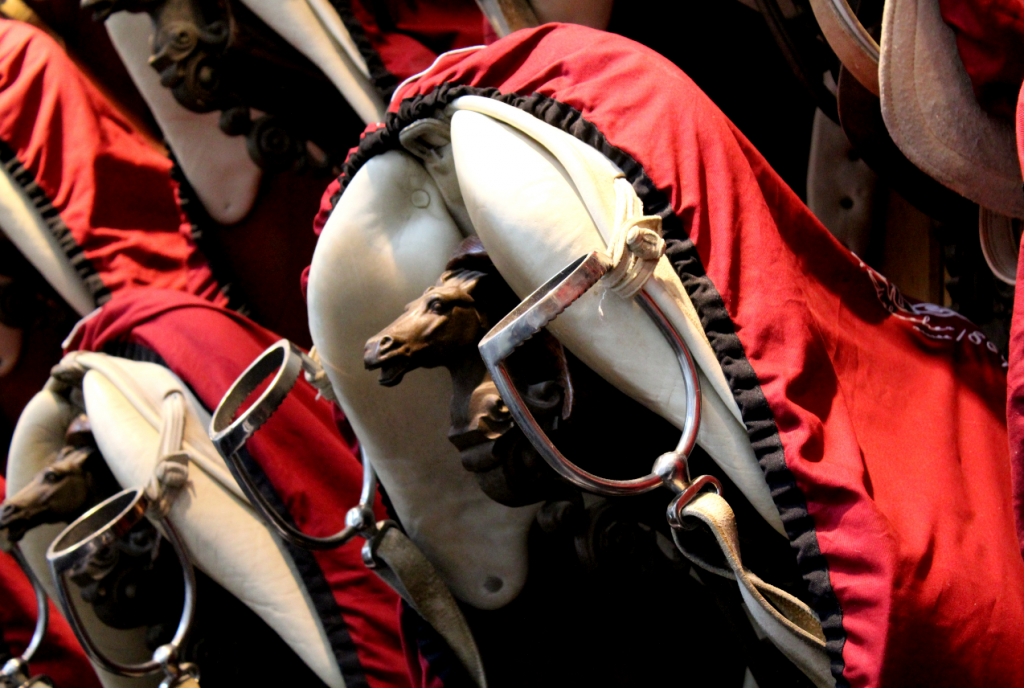

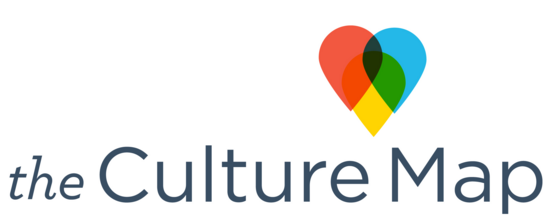
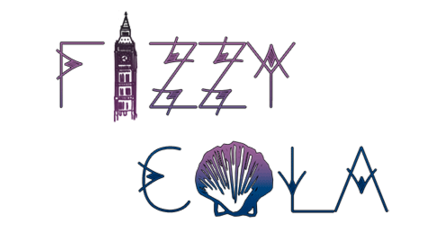
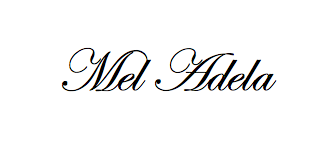

September 29, 2016
Wonderful pictures and a great write up – could be my next adventure!
September 29, 2016
Thanks Rob, if you do go, hope you enjoy it. Gotta try the tartiflette up there too which is amazing! Love all your posts, I grew up in Spain and yet seem to know so little about it. Your post about the sparrow grave in the horse of Phillip III is fascinating!
September 30, 2016
I visited Mont Blanc when I was very small. Just in a ski lift or something, though. I was desperate to see a) seals (???) and b) snow. I made a really tiny snowperson and decorated it with an alpine flower. I remember also having just found out about the seal fur trade and crying a lot over seals that holiday, (???) and my mum wearing a ‘Stop HiroChirac’ sweatshirt/T-shirt*, which dates this! Haven’t remembered all this in AGES…
The hike described above is much more hardcore than my childhood holiday. Beautiful photos! Are you going to attempt this one day?
* (like this one https://www.google.co.uk/search?q=stop+hirochirac&num=100&espv=2&source=lnms&tbm=isch&sa=X&ved=0ahUKEwj8luTQi7fPAhUhCcAKHblxAKoQ_AUICSgC&biw=1280&bih=918#imgrc=jDc_huYkYIk0HM%3A)
September 30, 2016
What is Hirochirac!? Awww I love the idea of you hunting for seals in Mont Blanc, very cute 🙂 Im not sure. Its maybe a bit too intense for me. 3 people died while Lee was up there!
October 3, 2016
Hirochirac is a portmanteau of Chirac, the then-President of France, and Hiroshima, and refers to the French nuclear testing then being undertaken in Polynesia, which came under masses of international criticism. My mum had to explain this to me on the ski lift!
Gosh, that is intense.
April 11, 2018
Great article !! Very useful in my preparation with useful tips.